Navigating Singapore: Your Ultimate Guide 2025 to the Singapore MRT Map
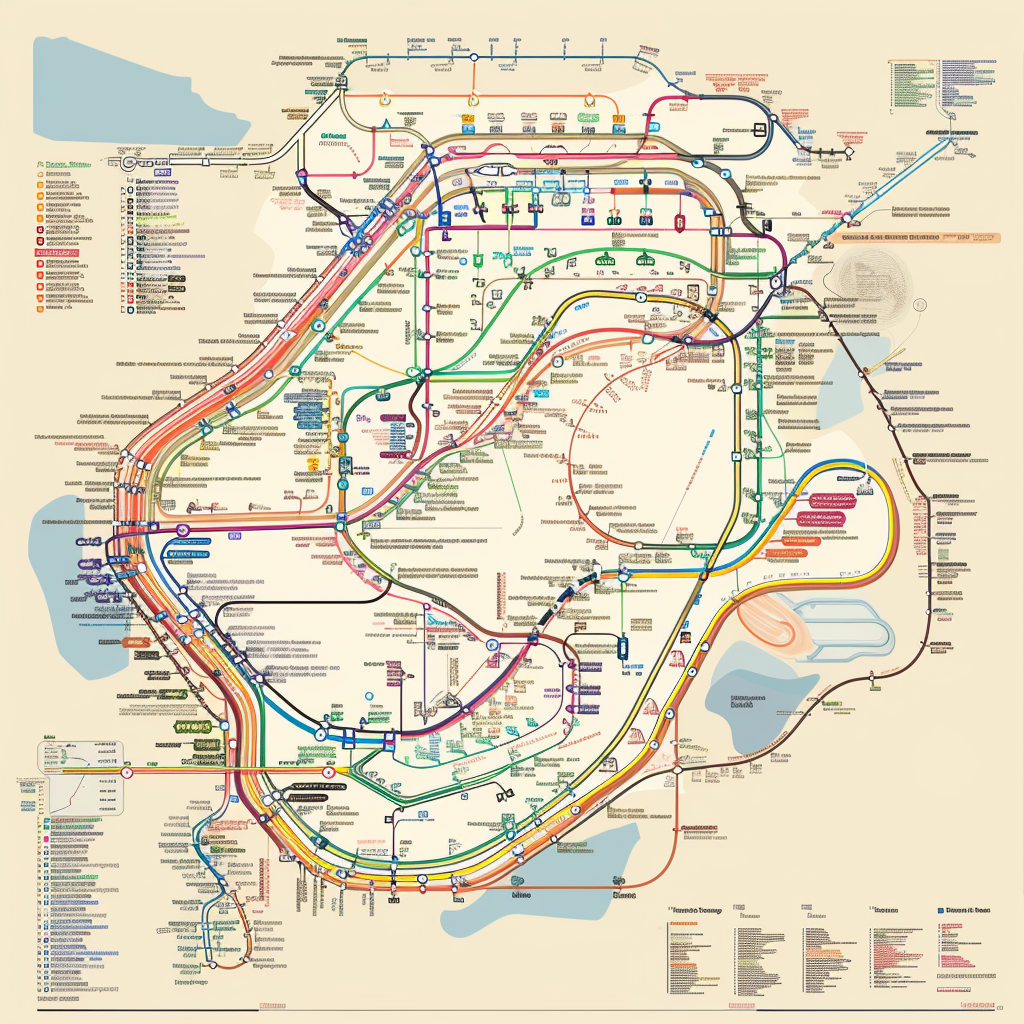
The Mass Rapid Transit, or MRT, is the backbone of Singapore’s comprehensive and modern public transport system. Since its inauguration in 1987, the Singapore MRT has evolved into an extensive network that connects the city-state’s various neighborhoods and key points of interest. As a resident or a visitor, understanding how to navigate this efficient transit system is crucial to experiencing the city’s diverse culture and attractions without the hassle of traffic congestion.
The MRT isn’t just a convenience; it’s a shining example of Singapore’s commitment to urban planning and public transportation. With its punctuality, cleanliness, and connectivity, the MRT stands out as a preferred mode of travel for millions of commuters daily. From the bustling heart of the Central Business District to the tranquil parks in the outskirts, the MRT offers a window into the island’s urban fabric.
For those new to the city or even longtime residents looking to explore unfamiliar areas, the Singapore MRT map is a critical tool. It provides a visual representation of the routes, allowing you to plan your journey and navigate the city with ease. Let’s dive into the details and features of the Singapore MRT map, and embark on a journey to master the art of moving around the Lion City.
Understanding the Singapore MRT map
The Singapore MRT map is a color-coded diagram that represents the city’s MRT lines and stations. Each MRT line is assigned a unique color, making it simple to identify and follow your desired route. The map also indicates interchange stations where you can switch between different lines, making complex journeys straightforward.
One of the first things to note is the systematic layout of the map. It is designed to be user-friendly, with clearly marked stations, lines, and the geographical orientation of the routes. The map also includes the Light Rail Transit (LRT) system, which services residential neighborhoods and complements the MRT by extending the reach of the rail network into the heartlands.
Understanding the MRT map is essential for efficient travel. It helps you to estimate travel times, identify the nearest MRT station to your destination, and even plan alternative routes in case of service disruptions. The map is available at all MRT stations, and you can also access a digital version on your mobile device, providing real-time updates and journey planning features.
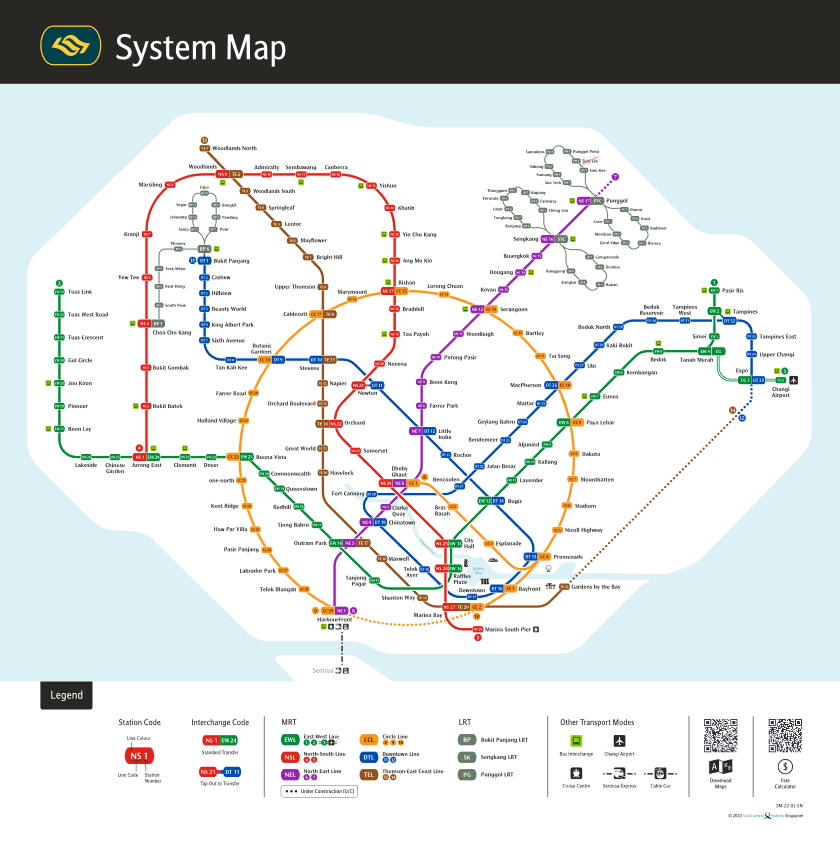
Benefits of using the Singapore MRT
The benefits of using the Singapore MRT are numerous. Its expansive network covers most of the island, making it possible to reach almost any destination within Singapore quickly and comfortably. The MRT is known for its frequency, with trains arriving every few minutes during peak hours, reducing wait times and making it a reliable form of transportation.
Cost efficiency is another significant advantage. The MRT is an affordable option compared to other modes of transport, especially when considering the high costs associated with owning and maintaining a private vehicle in Singapore. Moreover, the MRT is environmentally friendly, contributing to the city’s efforts to reduce carbon emissions and traffic congestion.
The comfort and convenience of the MRT system are further enhanced by its integration with other public transport services. Buses and taxis complement the MRT, offering a seamless travel experience. By choosing the MRT, you’re not just opting for a mode of transport; you’re embracing a lifestyle that prioritizes efficiency, sustainability, and the ease of moving around one of the world’s most dynamic cities.
Tips for navigating the Singapore MRT
Navigating the Singapore MRT can be a breeze with a few handy tips. Firstly, familiarize yourself with the MRT map before your journey. This will give you a clear idea of your starting point, destination, and any transfers you may need to make. It’s wise to identify a secondary route in case your primary choice is affected by delays or maintenance work.
Peak hours in Singapore are typically between 7:30 to 9:30 AM and 5:30 to 7:30 PM on weekdays. During these times, trains and stations can get crowded. If your schedule allows, consider traveling outside these hours for a more comfortable journey. Additionally, always stand to the left on escalators to allow others to pass on the right, keeping pedestrian traffic fluid.
Lastly, take advantage of smartphone apps that offer real-time updates on train schedules and crowd levels. These apps can greatly enhance your MRT experience by providing alerts on train arrivals, delays, and even suggesting the best carriage to board to find a seat during peak hours. With these tips in mind, you’ll be navigating the MRT like a local in no time.
Must-visit attractions near Singapore MRT stations
One of the best things about the Singapore MRT is its proximity to many of the city’s must-visit attractions. For example, the Bayfront MRT station brings you directly to the iconic Marina Bay Sands and the enchanting Gardens by the Bay. A short stroll from the Orchard MRT station, you’ll find yourself amidst the world-renowned shopping belt on Orchard Road.
History buffs will appreciate the convenience of visiting the culturally rich Chinatown and Little India, each served by their respective MRT stations. These neighborhoods offer a glimpse into Singapore’s past and present, with a blend of historic sites, temples, and vibrant marketplaces. For art enthusiasts, the Bras Basah and Dhoby Ghaut MRT stations provide easy access to the Singapore Art Museum and National Museum of Singapore.
The beauty of the MRT is that it not only connects you to well-known attractions but also to hidden gems throughout the city. Whether it’s exploring the quaint shops in Tiong Bahru or enjoying the coastal views from the Labrador Park MRT station, the MRT is your gateway to discovering the diversity of experiences that Singapore has to offer.
Exploring Singapore with the MRT: Routes and connections
Exploring Singapore with the MRT is an adventure in itself. The network is designed to facilitate easy connections between different lines. For instance, the Circle Line offers a loop that connects several radial lines, making transfers seamless. The Downtown Line, which traverses the city from east to west, connects you to a multitude of neighborhoods and attractions.
Strategically located interchange stations like City Hall, Dhoby Ghaut, and Outram Park allow for smooth transitions between lines. These hubs also serve as access points to many central locations. The North-East Line takes you from the residential heartlands in the northeast directly into the city, while the East-West Line connects you from the airport to the city center, making the MRT a convenient option for travelers.
Understanding the different routes and connections is key to maximizing the MRT’s potential. With stations meticulously plotted across the island, the MRT ensures that you’re never too far from your next destination. Whether you’re commuting to work, meeting friends, or exploring new areas, the MRT’s interconnected routes offer a dependable and efficient means of travel.
MRT fares and ticketing options
MRT fares in Singapore are determined by the distance traveled, making it a fair and equitable system for all users. Tickets can be purchased in the form of single-trip tickets or stored value cards, such as the EZ-Link and NETS FlashPay cards, which can be used across all public transport systems in Singapore.
For frequent travelers, purchasing a stored value card is the most convenient and cost-effective option. These cards can be topped up at any MRT station, convenience stores, or online. Tourists can opt for the Singapore Tourist Pass, which offers unlimited travel for a fixed number of days. There are also concession schemes available for students, senior citizens, and persons with disabilities, providing subsidized fares.
The fare structure is transparent, and you can easily calculate your fare using fare calculators available online or at MRT stations. With a variety of ticketing options designed to cater to different needs, the MRT fare system ensures that you have the flexibility and convenience to choose the option that best suits your travel habits.
Accessibility and facilities at Singapore MRT stations
Accessibility is a hallmark of the Singapore MRT system. Stations are equipped with a range of facilities to ensure that everyone, including the elderly, travelers with young children, and those with disabilities, can use the MRT with ease. Elevators, ramps, and tactile paving are standard features at all MRT stations.
Additionally, many stations offer amenities such as restrooms, ATMs, and retail outlets, providing added convenience for commuters. The stations are also integrated with bus interchanges and taxi stands, making it simple to switch to different modes of transport. Bicycle racks and car parks are available at certain stations, supporting the city’s push towards active mobility and a car-lite society.
The attention to detail in the design and maintenance of MRT stations underscores Singapore’s commitment to inclusivity and comfort. With these facilities in place, the MRT is not just a transit system; it’s a safe and welcoming space for all members of the community to travel through and interact with.
Safety and security on the Singapore MRT
Safety and security are top priorities on the Singapore MRT. Each train and station is monitored by a comprehensive network of CCTV cameras, and emergency communication devices are available in the event of an incident. Regular security patrols and exercises are conducted to ensure preparedness for any situation.
The MRT also emphasizes the importance of passenger safety through public campaigns that promote safe travel behaviors, such as standing behind the yellow line on platforms and being mindful of train doors. In addition, the trains and infrastructure are subject to rigorous maintenance schedules to ensure the system’s reliability and to prevent accidents.
The collective efforts of the authorities, operators, and the public contribute to an MRT system that is not only efficient but also one of the safest in the world. As a commuter, you can have peace of mind knowing that every aspect of your journey is being looked after with the utmost care.
Conclusion: Making the most of your Singapore MRT experience
In conclusion, the Singapore MRT is a world-class transit system that stands at the heart of the city’s transportation infrastructure. By mastering the Singapore MRT map and leveraging the various routes and connections, you can navigate the city with confidence and ease. Whether it’s for daily commutes or leisurely explorations, the MRT is your key to unlocking the rich tapestry of experiences that Singapore has to offer.
Remember, the benefits of using the MRT extend beyond convenience; it’s also an environmentally responsible choice that contributes to the city’s sustainability goals. With affordable fares, a range of ticketing options, and top-notch accessibility and facilities, the MRT is designed to cater to the needs of all its users.
Safety and security are integral to the MRT experience, ensuring that you can travel with assurance. As you step onto the train and watch the cityscape pass by, know that you are part of a seamless and dynamic system that reflects the innovative spirit of Singapore.
To make the most of your Singapore MRT experience, always keep a copy of the MRT map handy, and consider downloading the digital version for real-time updates and journey planning. And if you haven’t already, Download Map now to start your adventure in navigating the Lion City with confidence and convenience.
Singapore MRT Map FAQ
Relevant news
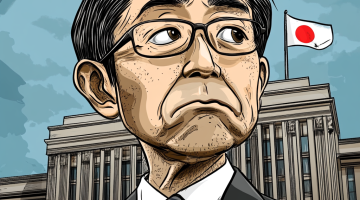
Japan’s Central Bank Holds Interest Rates Steady at 0.25%
In a move that met market predictions, the Bank of Japan (BOJ) has decided to…
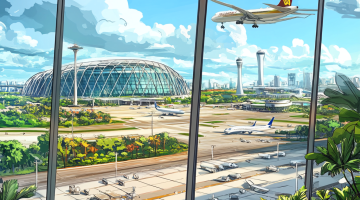
Best Transit Hotels at Jewel Changi Airport, Singapore
Traveling through Singapore? Jewel Changi Airport offers more than just a layover experience. This architectural…
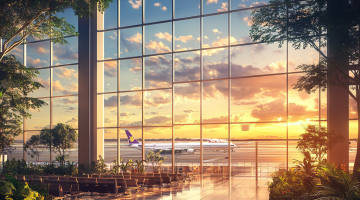
Discover Changi Airport: A Gateway to Singapore
Changi Airport stands as a beacon of excellence in the world of air travel. More…

Singapore Stocks Poised to Gain from US Fed Rate Cuts
Impact of Anticipated US Federal Reserve Rate Cuts on Singapore's Stock Market As the US…

OpenAI Opens ChatGPT for Use Without Registration 2024
The performance of ChatGPT, developed by the artificial intelligence company OpenAI, has been impressive. However,…

A Comprehensive Guide 2025 to Toto Singapore
Gambling can be addictive. If you or someone you know struggles with gambling addiction, call…

